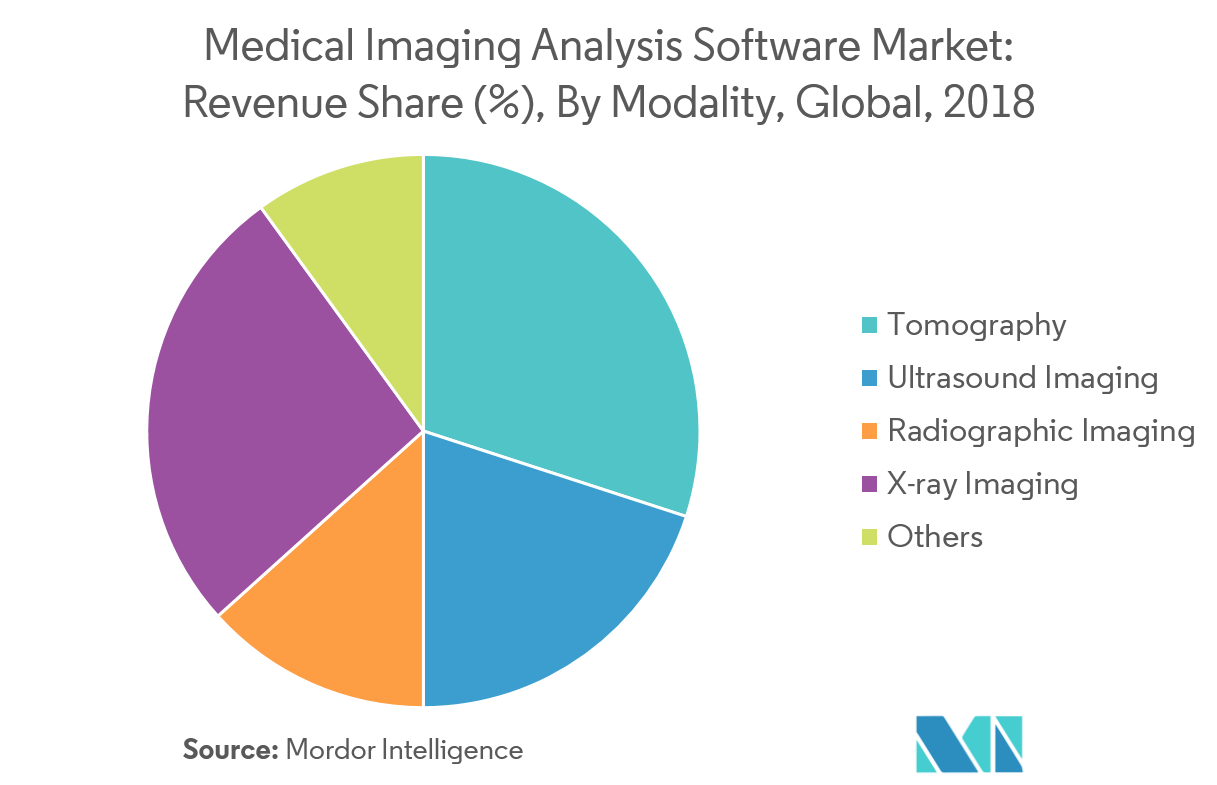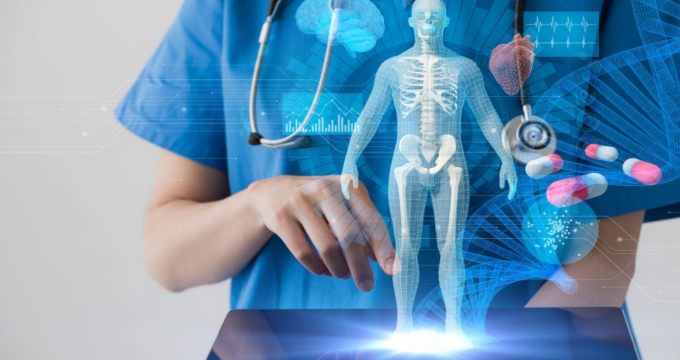The advancements in healthcare over the last two centuries account for the increase in lifespans and plummeting mortality rates. Everything comes at a price though: along with the aging population, the 21st century has seen an increase in chronic illnesses with the growing proliferation of cancer and cardiovascular diseases on a global scale. It’s true, humans are less likely to die from natural disasters and epidemics; instead, we have become more prone to gradually developing maladies.
This calls for advanced diagnostic techniques and requires patients to undergo regular imaging scans. The number and variety of imaging techniques are also increasing – and so is the need for sophisticated software for medical image analysis.
What Is Medical Imaging?
As such, medical imaging is the process of creating a visual representation of a human body for clinical analysis. The body, or, rather, certain organs and body parts, are analyzed using scanning equipment, and the obtained images are then subjected to research. Today’s scanning techniques include tomography, ultrasound, radiographic and Х-ray imaging, magnetic resonance imaging (MRI), to name a few. The types of images they produce range from 2D to 4D (video recordings, with time being the 4th dimension).
Medical scanning is a routine procedure in hospitals and diagnostic centers: over 80 million computer tomography scans including angiography, colonography, dual-energy, and perfusion CT, are performed each year in the United States alone. On a global scale, the United States is the largest market for medical imaging software, and this situation isn’t likely to change until 2024.

Medical Imaging Software: Applications and Use Cases
The emergence of new scanning techniques calls for advanced tools for image acquisition, review, and processing. At VARTEQ we build such tools using Machine Learning, Natural Language Processing (NLP) and sophisticated image recognition technologies. More specifically, here’s how medical imaging software can assist radiologists, ultrasound specialists, and other medical scanning experts in their work.
Image capture and acquisition
Medical imaging software captures visual medical information produced by medical scanning equipment and automatically converts it into a DICOM format (the international standard for transmission, storing, retrieval, printing, processing, and display of medical imaging). On top of that, such systems provide centralized archiving and backup storage of all medical data.
Data annotation and labeling
Interpreting medical images requires meticulousness and accuracy. First of all, clinical experts need to label the data obtained during scanning according to certain characteristics. They may, for example, download hundreds of X-ray images from their archive and label them as normal and abnormal. Then they proceed to label anomalies according to their type and character and deliver this information to patients. Finally, they have to archive this information for further reference.
Medical imaging software automates all the abovementioned stages and helps deliver the results of medical scans accurately and on time. At VARTEQ we have expertise in developing web-based solutions that help users label and annotate images by guiding them through the process in a step-by-step and quiz-like form.
Medical image interpretation
Interpreting medical images is science as much as art. Medical imaging software uses image enhancement, segmentation, and texture analysis to identify tumors, fractures, and other malfunctions. Such tools are extremely helpful in a situation when the image lacks resolution and clarity, help ensure accuracy and avoid mistakes.
Removing protected health information
Medical image software helps find and remove protected health information from images (the procedure referred to as de-identification). In a situation when disclosure of patients’ personal info is irrelevant, software tools can help quickly remove demographic, insurance and billing data from images. The image then quickly becomes available for sharing with other clinical experts, if necessary.
Triage patients and prioritize worklists
Medical image analysis software helps medical personnel streamline administrative tasks: organize patients, prioritize tasks and facilitate communication and data sharing. With modern software tools, healthcare organizations can ensure easy and secure sharing of patients’ records between clinics.
Software for Medical Image Analysis: Value and Benefits
Medical imaging software rids medical personnel of tedious manual work often associated with processing high-resolution images and lets them focus on what’s really important: improving patients care and the quality of diagnostics. These efforts translate into increased patients satisfaction and help attract new streams of revenue.
Apart from minimizing manual labor, the application of software solutions also helps avoid human error and deliver accurate and correct info. Most importantly, AI-based software tools for analyzing medical images help deliver information in an urgent and timely manner, which is extremely important and can truly be a lifesaver.
The market for medical imaging software is growing steadily, with few established players providing out-of-the-box solutions for healthcare. Sometimes, though, you need a set of custom-made tools you can use in your work, built with consideration to the specific needs of your diagnostic center or clinic. If this is the case, partnering with a reliable software solutions provider could be a viable tactic.
Read also: How Automation And IoT Are Transforming Healthcare
Wondering how you can truly unlock the benefits of AI-driven medical image analysis? Talk to us now, and request a free consultation!

